With news of mass layoffs everywhere, you’d think that finding great employees would be easier than ever. But the reality is, in fact, the opposite.
There were 9.9 million openings in the United States in February 2023, but only 5.8 million unemployed Americans. The US is one of many countries currently facing a skills shortage in the job market.
Today, we will find out how bad this shortage really is and what you can do to change your talent strategy to secure top talent even in a challenging climate.
TL;DR – Key Takeaways
- We are indeed facing a global talent shortage affecting many industries, with 4 out of 5 employers worldwide reporting challenges with finding skilled employees.
- Many factors contribute to the situation, from the global pandemic to mass layoffs, economic and education trends, and shifting demographics.
- To bridge the skills gap and fight the global talent crunch, most employers are turning to upskilling and reskilling their existing workforce over finding new candidates.
- But the solutions don’t stop there. Employers can rise to the challenge by taking practical steps and implementing competitive strategies, such as reviewing compensation and benefits, offering flexible or remote roles, and embracing skills-based hiring.
- Attract and identify top talent faster with skills tests by Toggl Hire, saving precious time and resources that are better spent elsewhere!
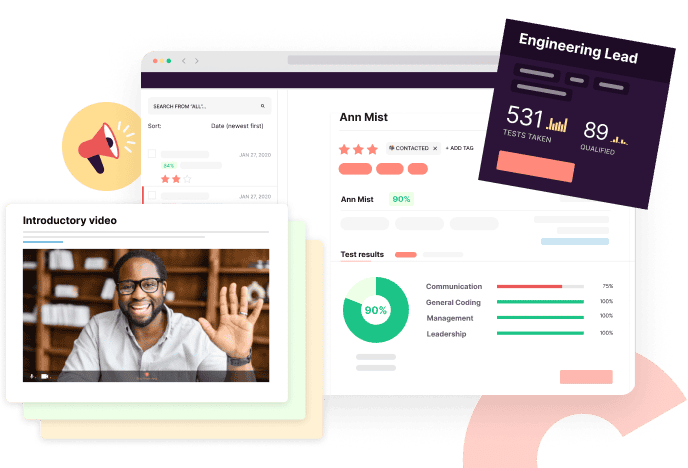
Is there really a global talent shortage?
Yes, there sure is. According to research by ManpowerGroup, 4 out of 5 employers globally report difficulties finding skilled employees in 2023, representing a 17-year high in the global talent shortage.
In fact, it has become so difficult to bridge the skills gap with new employees that 71% of employers are now solving this problem by upskilling and reskilling their existing workforce.

From Taiwan to Colombia, the global market is currently affected by multiple talent shortage challenges. But why is this talent gap happening in the first place?
The reasons for a talent shortage are many. Let’s look at some of the headliners:
- The COVID-19 pandemic – caused many employees to re-evaluate what matters to them in a job.
- The Great Resignation – whereby workers are voluntarily leaving their jobs due to dissatisfaction.
- Mass layoffs (in 2022 and 2023) – a result of over-hiring in the pandemic, especially in the tech sector.
- Economic trends – from the Fourth Industrial Revolution to high inflation and unemployment rates, and the jobs of the future requiring a shift in the most in-demand soft and technical skills.
- Education trends – not to mention an 8% drop in college enrolment rates from just 2019-2022, as well as lower high school enrolments.
- Demographics – population growth is shrinking or slowing across major economic centers, including China and Europe, while many others, like the US and Japan, face aging populations.
Ultimately for hiring managers, these trends point to fewer job seekers in the market, with the best candidates already employed elsewhere.
The bottom line is that you will have to work much harder to attract talent in today’s job market, especially for more senior and technical roles where the skills gap is more evident.
What are the biggest talent shortages?
According to statistics by the World Economic Forum, global talent shortages affect all industries to varying degrees. The top 5 industries with the biggest talent shortages include:
- Accommodation
- Oil and Gas
- Manufacturing
- Hospitals and Healthcare
- Real Estate
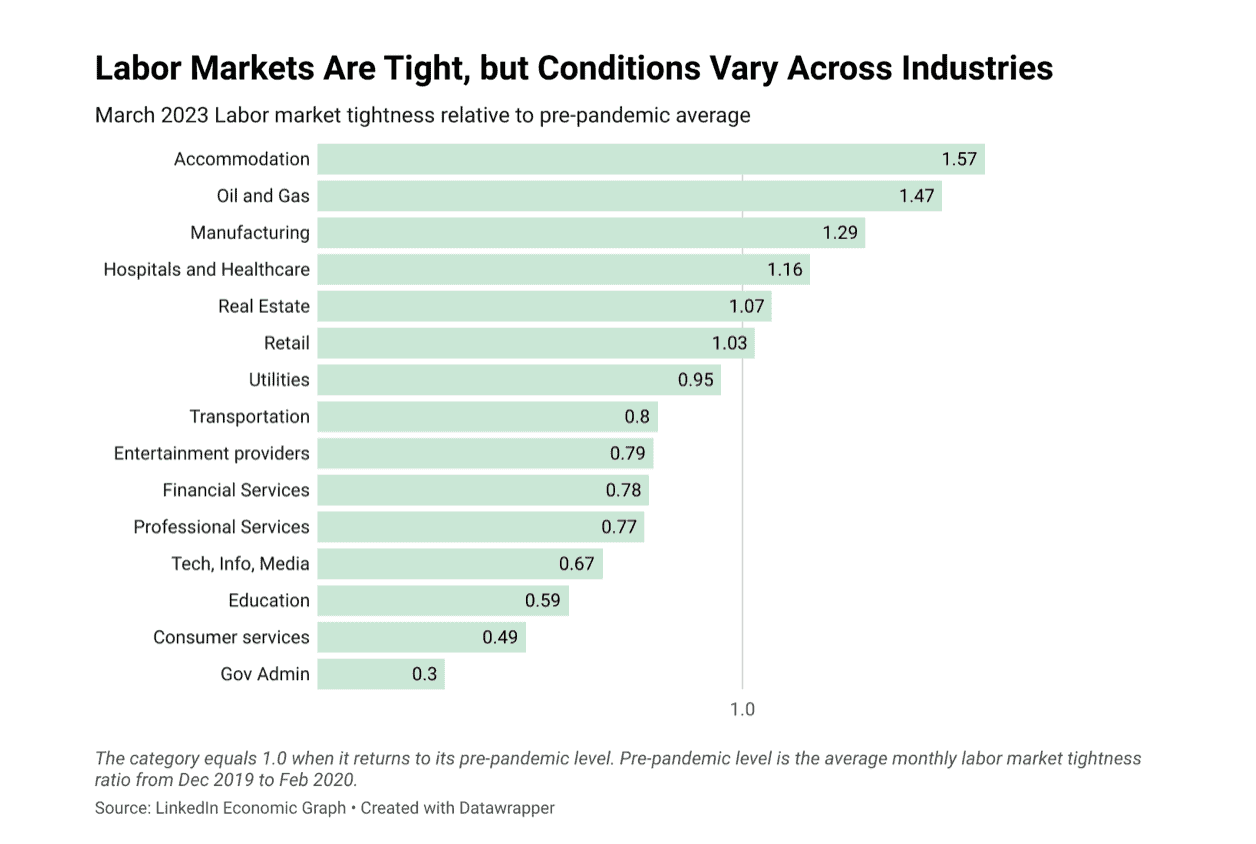
Other major findings by the WeForum state that by 2025:
- 85 million jobs will be lost
- 97 million new jobs will be created
- and 50% of the workforce will need to reskill
As we begin to understand the true implications of those figures, job seekers and hiring managers reevaluate the skills they possess and which ones they need to acquire.
Employees of the future will need to keep up-to-date with ever-evolving technologies, like AI and cloud computing, while fine-tuning soft skills like people management, communication, and problem-solving.
Skillsets employers are seeking most – and struggling to find
| Soft Skills | Demand in % | Technical Skills | Demand in % |
|---|---|---|---|
| Reliability & Self-Discipline | 29% | IT & Data | 27% |
| Creativity & Originality | 26% | Engineering | 22% |
| Critical Thinking & Analysis | 26% | Sales & Marketing | 20% |
| Reasoning & Problem-Solving | 26% | Operations & Logistics | 19% |
| Resilience & Adaptability | 26% | Customer Facing & Front Office | 17% |
How do you overcome a talent shortage?
The talent shortage is one of, if not the biggest, recruiting challenges today. But like any challenge, big or small, you can rise to it by taking several practical steps, such as:
- Investing in your employees’ career paths (upskilling and reskilling)
- Taking a look at previous job applicants and reaching out to top candidates in your talent pipeline
- Launching or renewing your employee referral program
- And taking a look at our list of top strategies for attracting and retaining top talent below!
16 strategies to attract qualified workers in a talent shortage
In a shortage of skills, hiring managers are competing over top talent. In such a climate, offering a good salary with some perks won’t cut it, not when a dozen other companies are doing the same thing.
To help you stand out from the crowd and prepare your talent acquisition strategy, we examine the top strategies to attract qualified candidates in a pinch.
#1 – Review your compensation and benefits
This is as important for retaining your existing employees as it is for attracting top talent. As you create new job ads, thoroughly review the salaries for the position using websites like Glassdoor and Payscale. And use this information to guide salary reviews for your current workforce.

Tip! Dig deep into communities such as Reddit to see what salaries people in your industry discuss. Keep your eyes peeled and be ready to pay more to get the best people.
#2 – Offer remote work and flexible opportunities
98% of employees want to work remotely at least some of the time. Meanwhile, only 16% of companies operate on a fully remote model. By offering remote and flexible schedules, you can easily stand out against the competition, especially those that haven’t yet understood the importance of a better work-life balance.
There are plenty of handbooks on remote work to help get you started by companies like Toggl that have been at it for more than a decade. Especially for countries facing the biggest skills shortages, remote hiring opens up access to the talent pool globally.
#3 – Re-evaluate the skills you already have (and the ones you’re lacking)
Every job description lists the must-have and nice-to-have skills employers require for the role.
But when you add up all the skills across your workforce, are there any glaring gaps? Taking the time to re-evaluate the skills in and across your organization can help you identify exactly who you need for your next hire.
#4 – Embrace skills-based hiring
Are you still letting the best resume and cover letter writer win the job? Candidates can get discouraged after adapting their resume for the 20th time in a month or writing another cover letter.
Instead, use skills-based hiring. Give your potential candidates a skills assessment by Toggl Hire so they can apply faster while you save hours of time manually screening CVs.
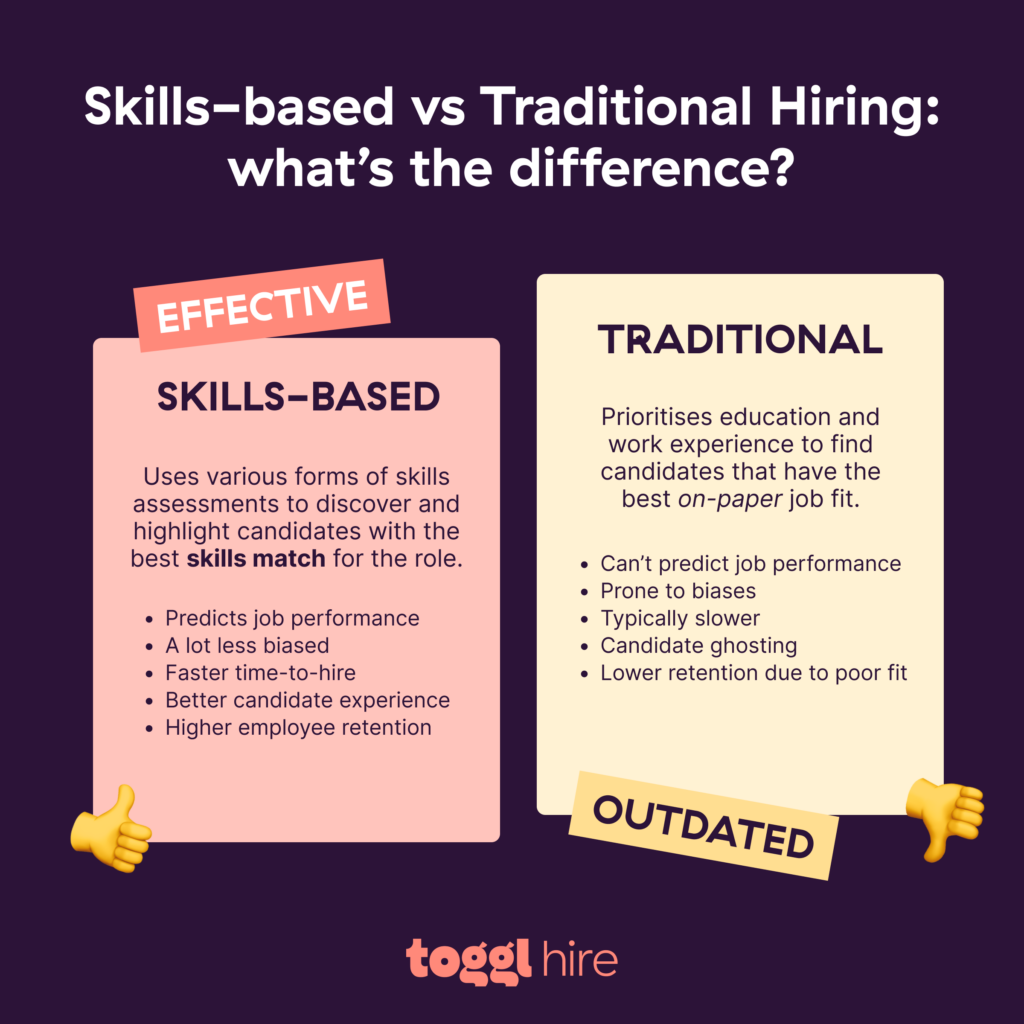
By automating this stage of the application process, candidates find it more interesting while you get to what you really want to know: whether the candidate can actually do the job or not.
#5 – Hire internally
When talking about internal hiring, there are three different types: vertical, horizontal, and functional mobility.
Employees are more engaged, efficient, and productive when given the chance to move to another role.
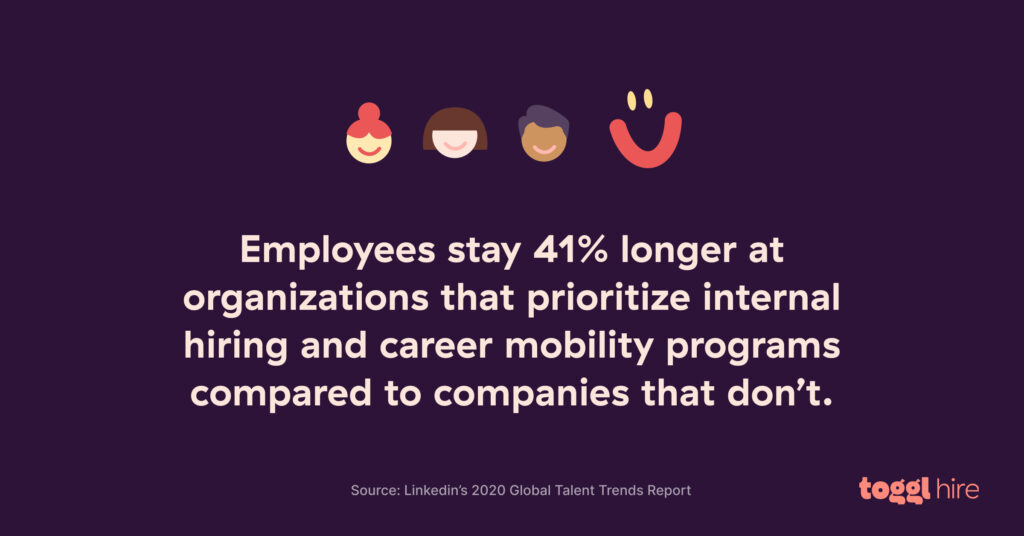
Before putting out a new job opening, consider your existing workforce and ask yourself – is there someone already here who could cover most of the job duties?
Instead of hiring someone new by default, consider offering one of your employees a lateral move if they have some of the skills you lack. They already know the business and company culture, skipping over the full onboarding period and saving you the cost of an external hire.
Learn more about the best internal mobility practices 🔥
#6 – Open up to non-traditional candidates
Some candidates have the right skills but not the right education. For example, you may want to hire a designer with formal design education and a relevant BA degree. If you make this a hard requirement, you can easily pass up candidates that may have decades of experience in the field but no formal education.
The solution? Use skills tests as the first step of the hiring process to make sure you attract skilled workers to your job openings, not just job seekers with the appropriate diploma.
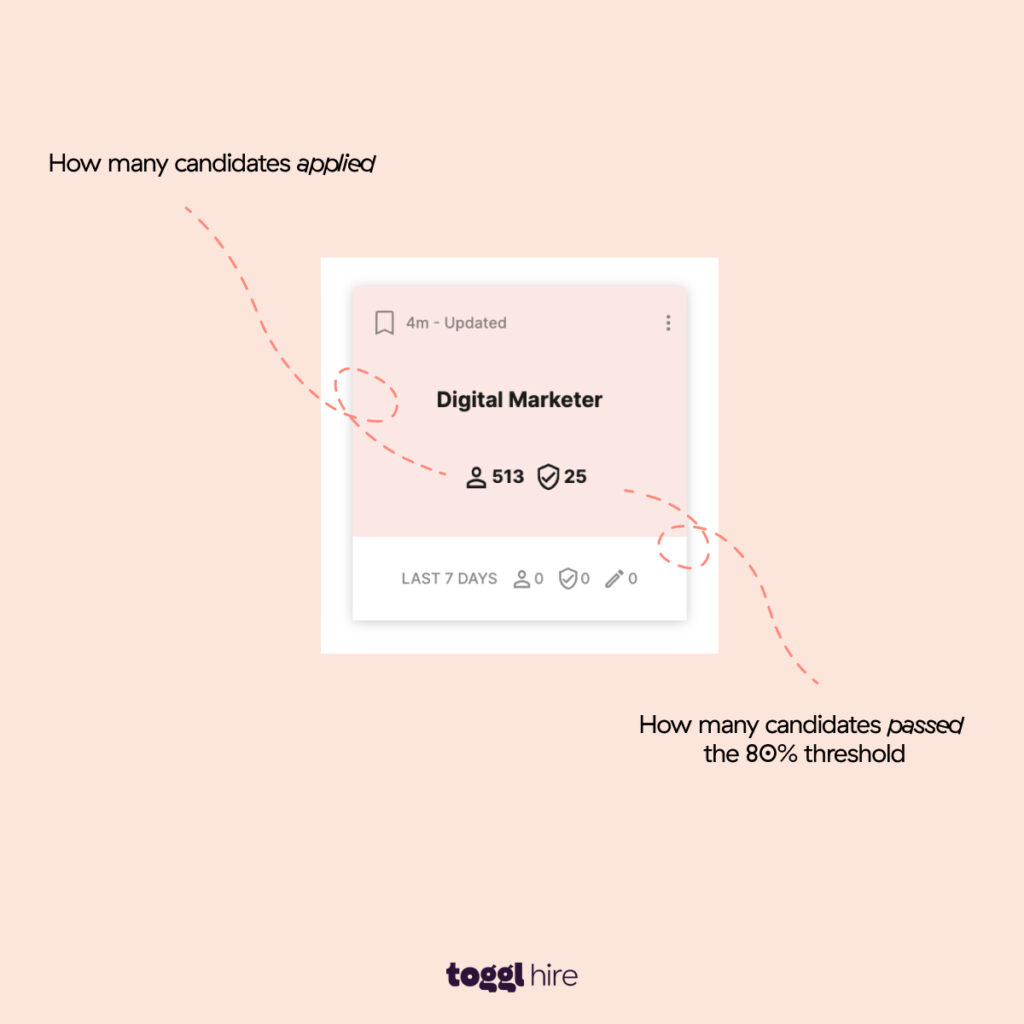
#7 – Attract passive candidates
According to Workable’s 2021 research, 37% of people are passively open to new opportunities, while 63% of respondents are passively looking for a better salary, perks, and benefits.
If your hiring tactics exclude passive candidates, then you’re only limiting yourself to an ongoing talent shortage.
Try creative sourcing strategies to get the attention of skilled passive candidates, such as hiring competitions and skills tests on social media. Creating a great employee referral program helps too. You can even try promoting your openings to your existing customers.
#8 – Offer graduate schemes
Create your own skilled labor pool by employing students fresh out of college. Whether you offer an internship or a proper role, this is a superb way to fight the global talent crunch and shape your future employees to suit your business best.
And, should you decide to extend an offer to your interns, 80% of candidates will accept it. Not only can it help attract talent to your organization, but you also stand a very high chance of retaining them.
#9 – Work on your employer branding
75% of active job seekers are more likely to apply to an open role if the company is working on their employer brand. In a global talent crunch, sometimes it pays to look inward and build a brand that candidates can identify with and desire to work for.
This can include strategies such as increased social media activity, participating in job fairs (online and offline), promoting your employees on your website and blog, creating video content across different platforms, giving candidates a sneak peek of your daily life at work, and more.
#10 – Embrace diversity
According to research, 32% of candidates would not apply for a job if there is no clear diversity in the workplace.
To become more diverse, your first step should be to reduce unconscious bias. Introduce a DEI policy in your workplace to make sure you walk the talk, too.
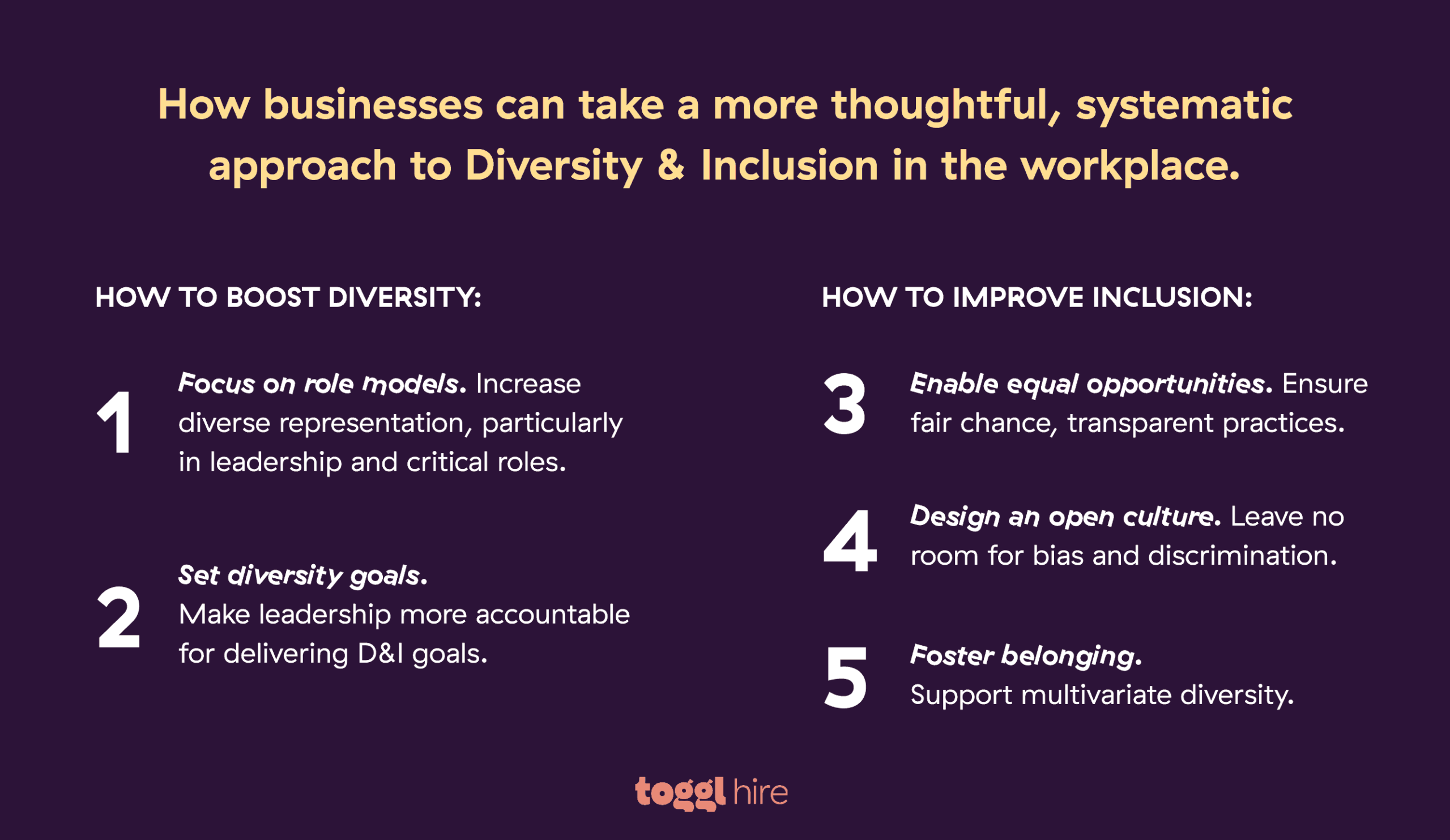
#11 – Review your mentoring program
Did you know that 90% of employees with a mentor say they are happy with their job? And that employees involved in mentorship programs have a 50% higher retention rate than those without?
If you don’t already offer a mentorship program for your existing and new hires, this is a good time to start working on one. In a battle against talent shortages, this can be the deciding factor that motivates skilled workers to apply, as they will have more professional development opportunities.
#12 – Keep up with the latest recruiting methods
Are you still manually reviewing resumes or relying on your ATS to scan the right keywords? As tech keeps developing, HR is not falling behind. And while you’re going through a pile of resumes, your competitors are using AI to determine if a candidate will be a good culture fit for your team.
Save time and money for your company by staying in the loop when it comes to the latest recruiting methods. How we work has changed drastically thanks to new tools and language learning models, as has the way we hire.
Head over to this article to discover The Best Recruitment Software Tools for 2023 🔥
#13 – Offer interview training for hiring managers
Interviews are a two-way street. As you evaluate the candidate, they are doing the same with your company.
It’s an area that could use some work for many companies, with 72% of candidates reporting that they don’t think recruiters are sensitive enough to their work commitments. More worryingly, a typical applicant will wait for 14 minutes on average before a hiring manager shows up for an interview.
Your candidates deserve better, so make sure to offer interview training for your hiring managers and show them how to represent your company in the best way possible.
#14 – Update your recruitment tech stack
Don’t fall behind the competition by neglecting the latest advancements in HR tech. For example, you can use video meeting tools for asynchronous video interviews, chatbots to answer questions from candidates on your career page, or even offer VR workplace tools. You can beat talent shortages by trying out new formats and tools.
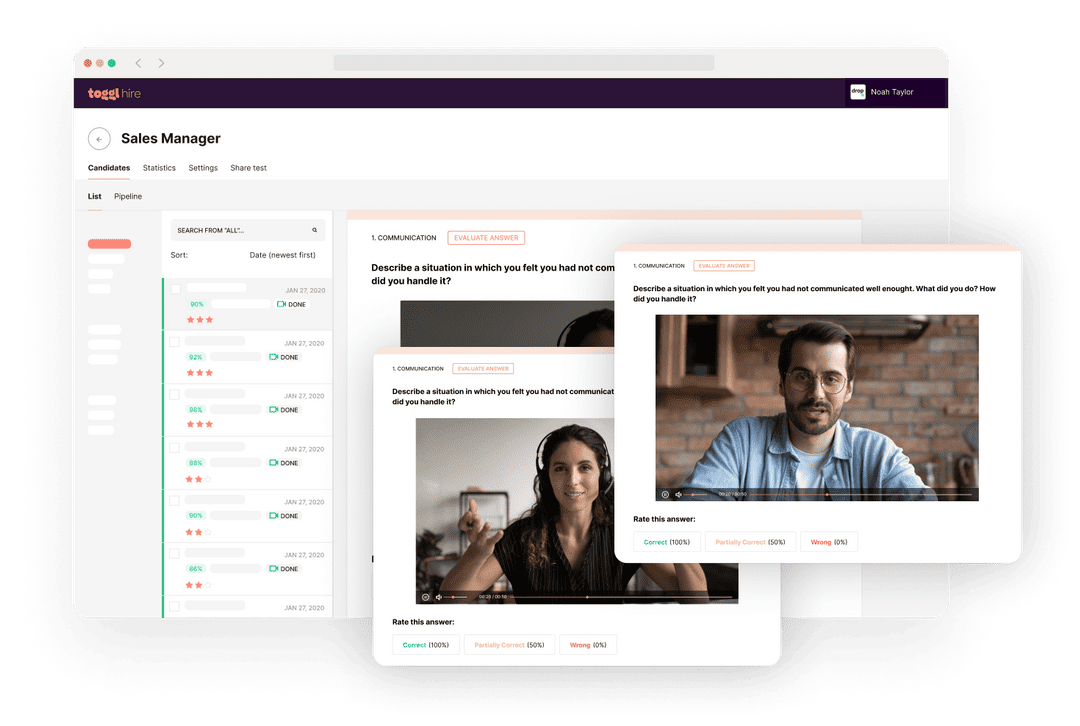
#15 – Look inside your company culture
86% of job seekers state that culture is somewhat or very important to them. The good news? They will assess your culture based on many things you can influence.
Clean up your social media and showcase who your employees are and why they matter. Spruce up your careers page and show some life in your job ads.
Invite your existing and past employees to leave reviews for you on websites like Glassdoor. Pick up a few testimonials from them and show them in your job ads – where applicants will read them.
#16 – Try creative recruitment campaigns
Think outside the box, and don’t rely on traditional channels to bring you top-notch players.
Create a social media post and boost it to get in front of your target audience. Visit a community your candidates frequent to offer them a role – e.g., try hiring developers on GitHub, or look for permanent staff on freelance platforms by making them an offer they can’t refuse.
To help attract younger generations, the British Army used pop culture references in their creative recruitment campaign targeting a specific audience. See our blog on 12 Creative Recruitment Campaign Ideas to Inspire You for more creative recruiting examples.
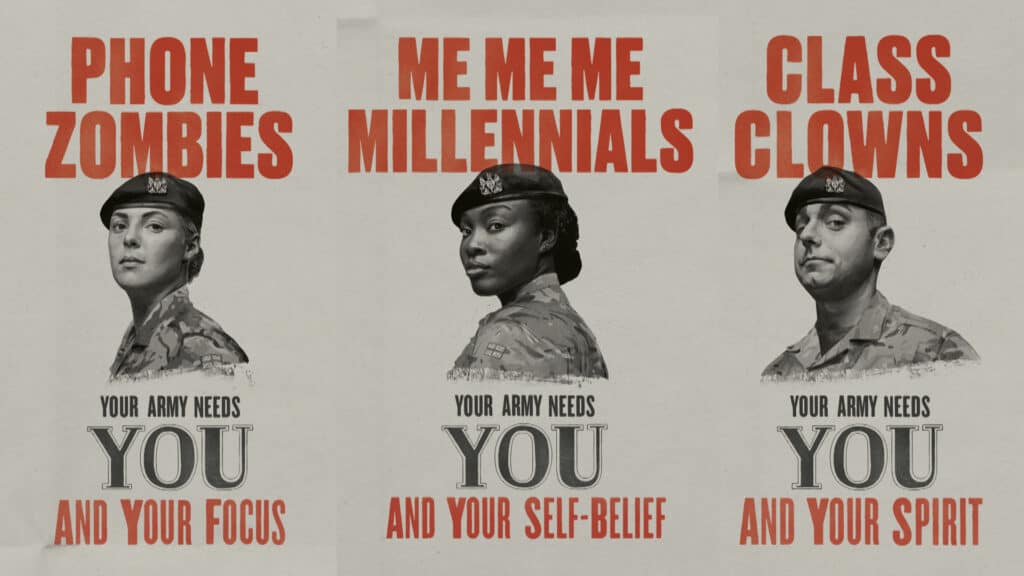
Fight the skills shortage with skills testing by Toggl Hire
In the current job market, don’t be tempted to make hasty hiring decisions with candidates that look good on paper before checking their skills.
Especially when a bad hire costs up to 30% of the employee’s annual salary – that’s a lot of money to lose that could have been easily prevented.
With Toggl Hire skills tests, you can screen thousands of candidates in a heartbeat to find out exactly who has the necessary skills to do the job, not just a pretty resume.
Grab your account today and start hiring based on evidence and not your gut feeling.
Juste loves investigating through writing. A copywriter by trade, she spent the last ten years in startups, telling stories and building marketing teams. She works at Toggl Hire and writes about how businesses can recruit really great people.







